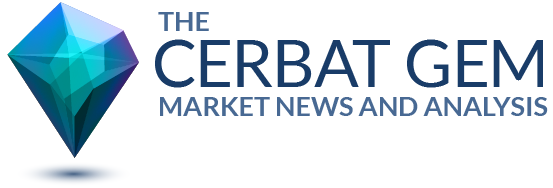Energy Recovery (NASDAQ:ERII – Get Free Report) and Donaldson (NYSE:DCI – Get Free Report) are both industrials companies, but which is the better investment? We will contrast the two businesses based on the strength of their dividends, earnings, institutional ownership, analyst recommendations, risk, valuation and profitability.
Valuation and Earnings
This table compares Energy Recovery and Donaldson”s gross revenue, earnings per share (EPS) and valuation.
| Gross Revenue | Price/Sales Ratio | Net Income | Earnings Per Share | Price/Earnings Ratio | |
| Energy Recovery | $135.19 million | 5.70 | $23.05 million | $0.34 | 42.79 |
| Donaldson | $3.69 billion | 2.69 | $367.00 million | $3.05 | 28.07 |
Risk & Volatility
Energy Recovery has a beta of 1.1, meaning that its stock price is 10% more volatile than the S&P 500. Comparatively, Donaldson has a beta of 1.01, meaning that its stock price is 1% more volatile than the S&P 500.
Analyst Ratings
This is a summary of recent ratings and recommmendations for Energy Recovery and Donaldson, as provided by MarketBeat.
| Sell Ratings | Hold Ratings | Buy Ratings | Strong Buy Ratings | Rating Score | |
| Energy Recovery | 0 | 2 | 3 | 2 | 3.00 |
| Donaldson | 1 | 1 | 2 | 0 | 2.25 |
Energy Recovery currently has a consensus price target of $18.64, indicating a potential upside of 28.11%. Donaldson has a consensus price target of $80.33, indicating a potential downside of 6.18%. Given Energy Recovery’s stronger consensus rating and higher possible upside, equities research analysts clearly believe Energy Recovery is more favorable than Donaldson.
Insider & Institutional Ownership
83.6% of Energy Recovery shares are owned by institutional investors. Comparatively, 82.8% of Donaldson shares are owned by institutional investors. 3.2% of Energy Recovery shares are owned by insiders. Comparatively, 2.2% of Donaldson shares are owned by insiders. Strong institutional ownership is an indication that endowments, large money managers and hedge funds believe a stock is poised for long-term growth.
Profitability
This table compares Energy Recovery and Donaldson’s net margins, return on equity and return on assets.
| Net Margins | Return on Equity | Return on Assets | |
| Energy Recovery | 17.02% | 11.67% | 10.23% |
| Donaldson | 9.94% | 29.50% | 14.79% |
Summary
Energy Recovery beats Donaldson on 10 of the 15 factors compared between the two stocks.
About Energy Recovery
 Energy Recovery, Inc., together with its subsidiaries, designs, manufactures, and sells energy efficiency technology solutions in the Americas, the Middle East, Africa, Asia, and Europe. The company operates through Water and Emerging Technologies segments. The company offers high and low pressure, and ultra pressure exchangers; AT and LPT hydraulic turbochargers; and high-pressure feed and circulation booster pumps for use in seawater and brackish desalination, and wastewater treatment. It also provides PX G1300, which reduces energy consumption and operating costs of carbon dioxide-based refrigeration systems; and spare parts, as well as repair, field, and commissioning services. It sells its products under the ERI, PX, Pressure Exchanger, PX Pressure Exchanger, Ultra PX, PX G, PX G1300, PX PowerTrain, AT, and Aquabold brands to original equipment manufacturers, supermarket chains, cold storage facilities, refrigeration system installers, and other industrial users; aftermarket customers consisting of desalination plant owners and operators; and project developers, end-users, and industry consultants, as well as engineering, procurement, and construction firms. Energy Recovery, Inc. was incorporated in 1992 and is headquartered in San Leandro, California.
Energy Recovery, Inc., together with its subsidiaries, designs, manufactures, and sells energy efficiency technology solutions in the Americas, the Middle East, Africa, Asia, and Europe. The company operates through Water and Emerging Technologies segments. The company offers high and low pressure, and ultra pressure exchangers; AT and LPT hydraulic turbochargers; and high-pressure feed and circulation booster pumps for use in seawater and brackish desalination, and wastewater treatment. It also provides PX G1300, which reduces energy consumption and operating costs of carbon dioxide-based refrigeration systems; and spare parts, as well as repair, field, and commissioning services. It sells its products under the ERI, PX, Pressure Exchanger, PX Pressure Exchanger, Ultra PX, PX G, PX G1300, PX PowerTrain, AT, and Aquabold brands to original equipment manufacturers, supermarket chains, cold storage facilities, refrigeration system installers, and other industrial users; aftermarket customers consisting of desalination plant owners and operators; and project developers, end-users, and industry consultants, as well as engineering, procurement, and construction firms. Energy Recovery, Inc. was incorporated in 1992 and is headquartered in San Leandro, California.
About Donaldson
 Donaldson Company, Inc. manufactures and sells filtration systems and replacement parts worldwide. The company operates through three segments: Mobile Solutions, Industrial Solutions, and Life Sciences. Its Mobile Solutions segment provides replacement filters for air and liquid filtration applications, such as air filtration systems; liquid filtration systems for fuel, lube, and hydraulic applications; exhaust and emissions systems and sensors; indicators; and monitoring systems. This segment sells its products to original equipment manufacturers (OEMs) in the construction, mining, agriculture, aerospace, defense, and transportation markets; and to independent distributors, and OEM dealer networks. The company's Industrial Solutions segment offers dust, fume, and mist collectors; compressed air and industrial gasses purification systems; and hydraulic and lubricated rotating equipment applications, as well as gas and liquid filtration for industrial processes. This segment sells its products to various distributors, OEMs, and end-users. Its Life Sciences segment provides micro-environment gas and liquid filtration for food, beverage, and industrial processes; bioprocessing equipment, that includes bioreactors and fermenters; and bioprocessing consumables, such as chromatography devices, reagents and filters, and polytetrafluoroethylene membrane-based products, as well as specialized air and gas filtration systems for applications, including hard disk drives, semi-conductor manufacturing and sensors, battery systems, and powertrain components to OEMs and various end-users. The company was founded in 1915 and is headquartered in Bloomington, Minnesota.
Donaldson Company, Inc. manufactures and sells filtration systems and replacement parts worldwide. The company operates through three segments: Mobile Solutions, Industrial Solutions, and Life Sciences. Its Mobile Solutions segment provides replacement filters for air and liquid filtration applications, such as air filtration systems; liquid filtration systems for fuel, lube, and hydraulic applications; exhaust and emissions systems and sensors; indicators; and monitoring systems. This segment sells its products to original equipment manufacturers (OEMs) in the construction, mining, agriculture, aerospace, defense, and transportation markets; and to independent distributors, and OEM dealer networks. The company's Industrial Solutions segment offers dust, fume, and mist collectors; compressed air and industrial gasses purification systems; and hydraulic and lubricated rotating equipment applications, as well as gas and liquid filtration for industrial processes. This segment sells its products to various distributors, OEMs, and end-users. Its Life Sciences segment provides micro-environment gas and liquid filtration for food, beverage, and industrial processes; bioprocessing equipment, that includes bioreactors and fermenters; and bioprocessing consumables, such as chromatography devices, reagents and filters, and polytetrafluoroethylene membrane-based products, as well as specialized air and gas filtration systems for applications, including hard disk drives, semi-conductor manufacturing and sensors, battery systems, and powertrain components to OEMs and various end-users. The company was founded in 1915 and is headquartered in Bloomington, Minnesota.
Receive News & Ratings for Energy Recovery Daily - Enter your email address below to receive a concise daily summary of the latest news and analysts' ratings for Energy Recovery and related companies with MarketBeat.com's FREE daily email newsletter.
